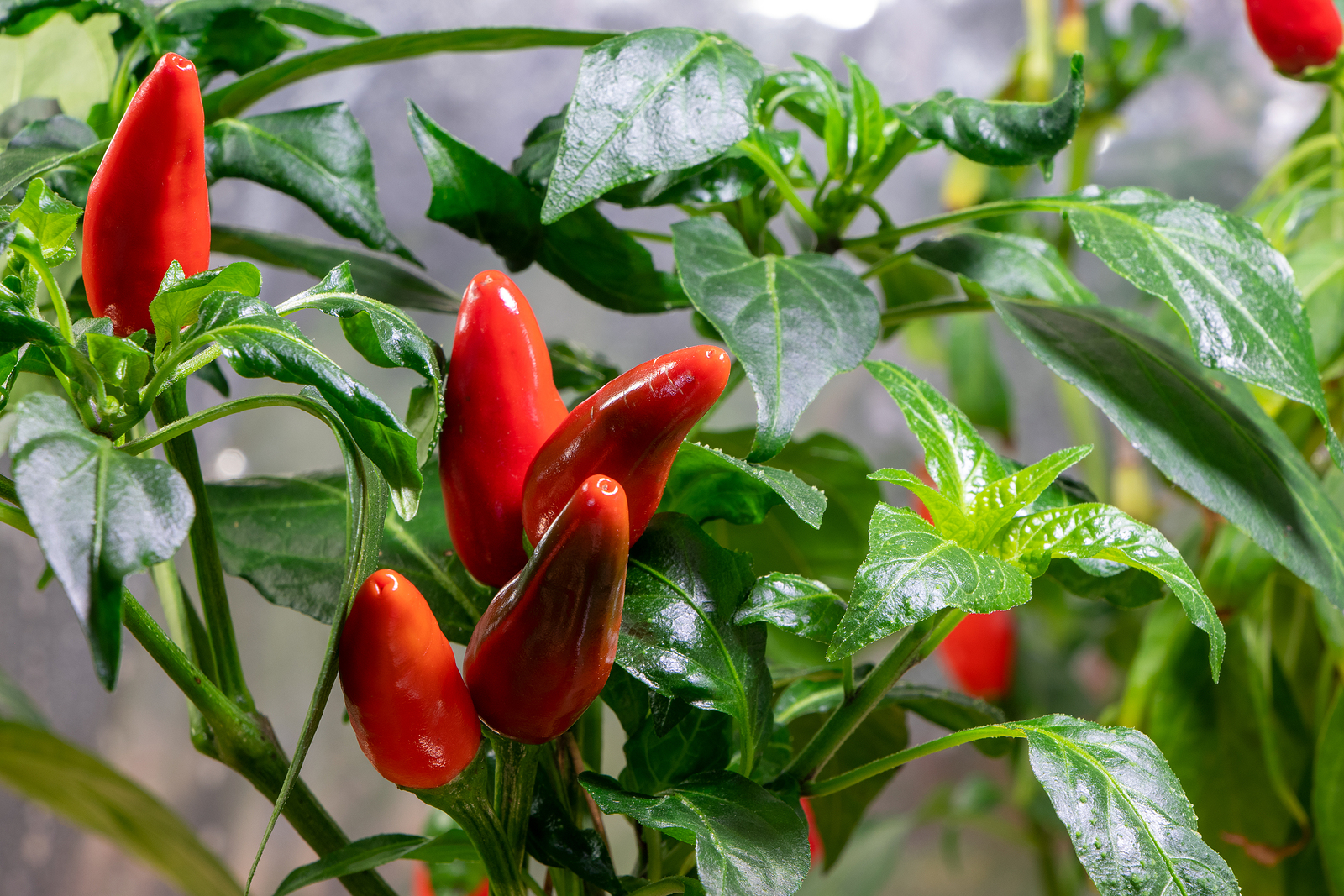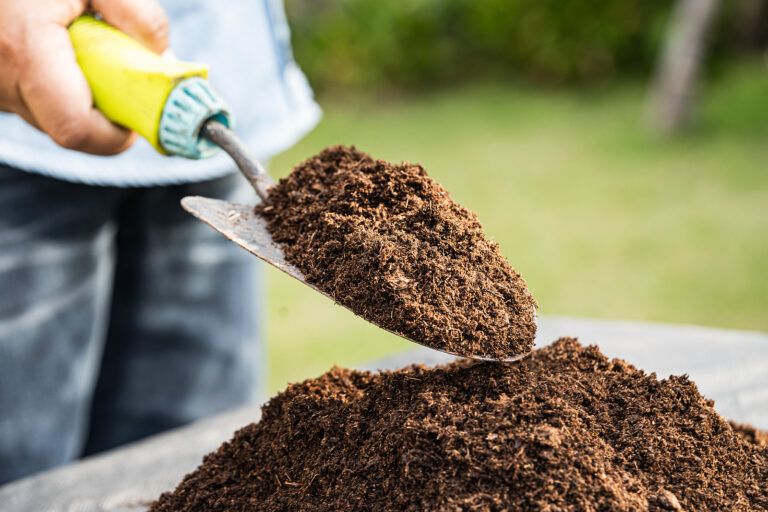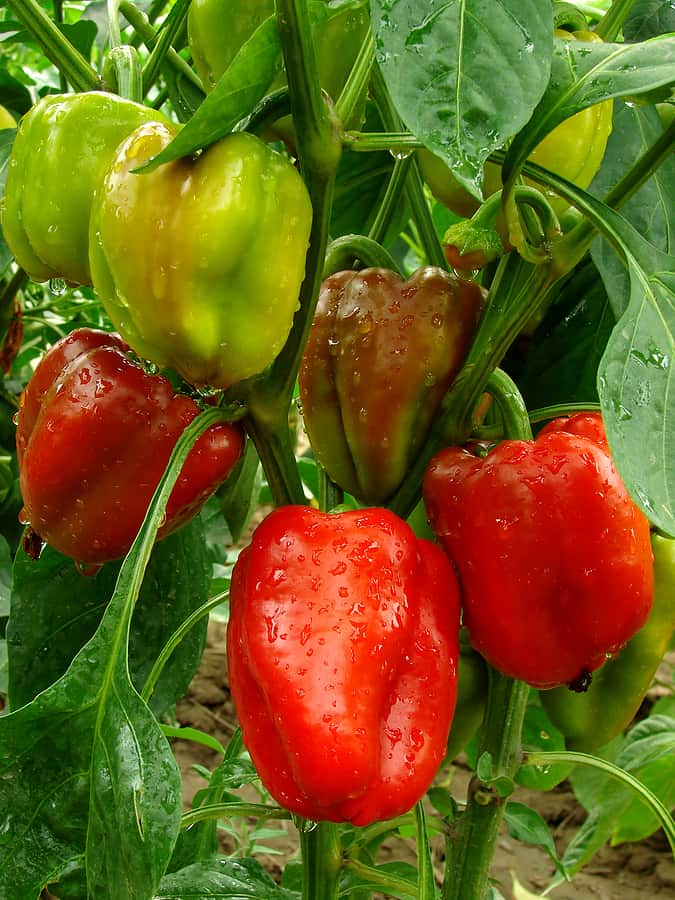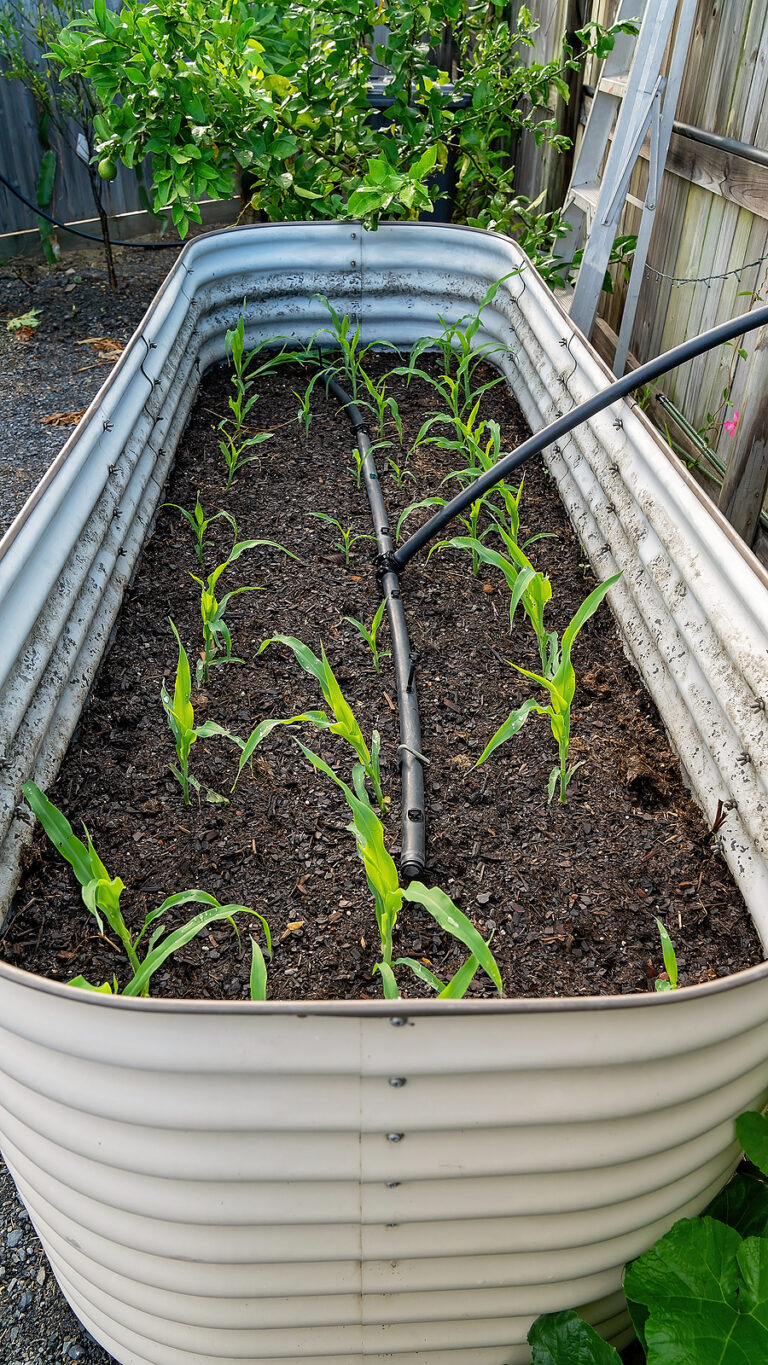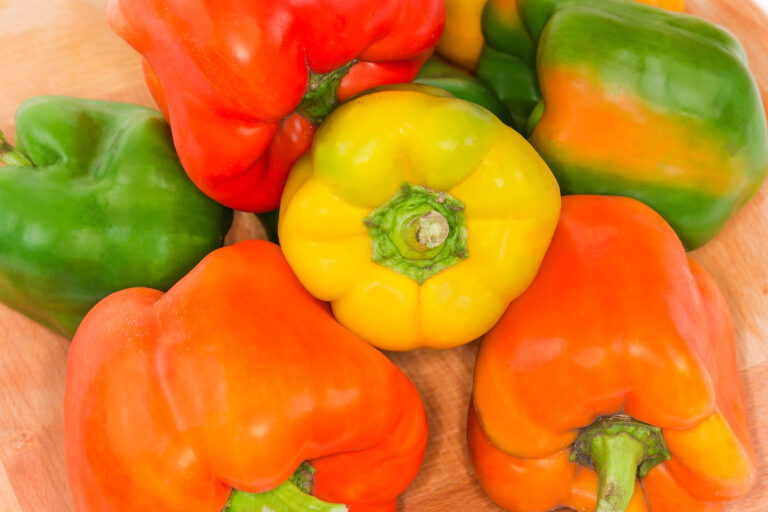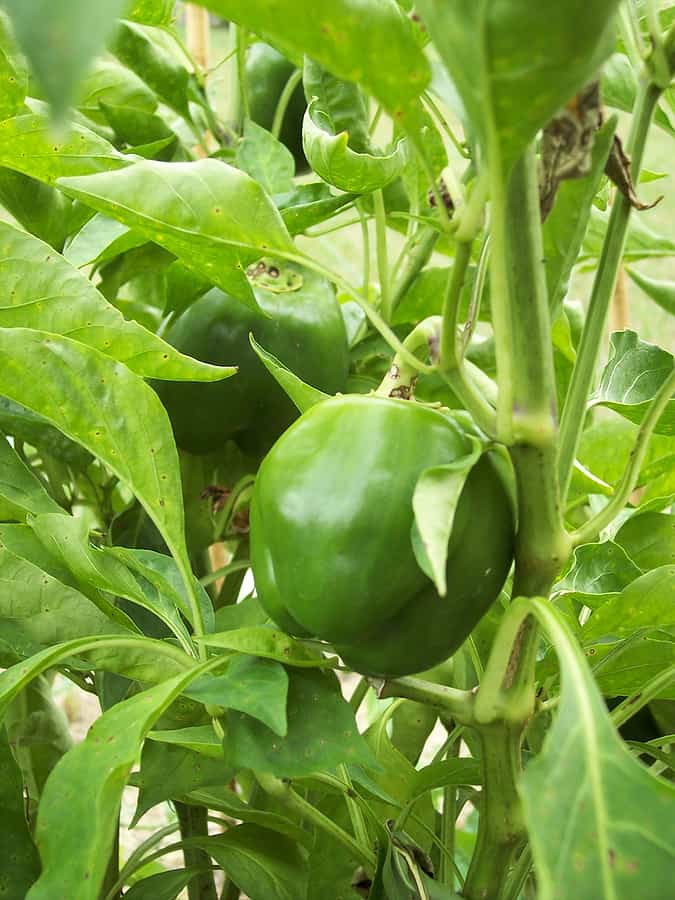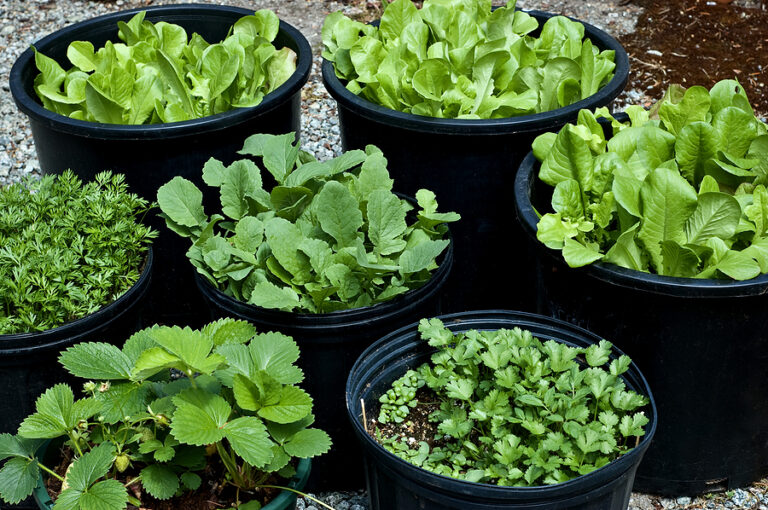How to Grow Hot Peppers in Containers: Tips for Small Spaces
Growing hot peppers in containers is an excellent solution for gardeners with limited space, such as those in apartments, urban environments, or areas with poor soil. I’ve personally enjoyed growing hot peppers in containers for years, and this method not only allows you to control growing conditions but also gives you flexibility in placement. Whether you’re growing fiery Habaneros or zesty Cayennes, growing peppers in pots is easier than you might think, and you don’t need a backyard to enjoy a spicy harvest. In this guide, I’ll share my personal experience and expert insights on how to grow hot peppers in containers successfully.
Can You Grow Peppers in Small Spaces?
Yes, you can definitely grow hot peppers in small spaces! Growing peppers in containers is a great way to maximize limited space, whether you live in an apartment, on a balcony, or in a small backyard. In fact, growing peppers in pots can be just as productive as growing them in the ground, if not more, since you can control soil conditions, water, and nutrients more easily. By choosing compact pepper varieties, such as mini peppers or smaller hot varieties like Thai chilies or jalapeños, you can successfully grow peppers in as little as a few square feet.
The key to growing hot peppers in small spaces is ensuring they get enough sunlight and proper care. You can place containers on windowsills, balconies, or patios where they will receive 6–8 hours of direct sunlight a day. If you’re growing indoors, a grow light can supplement natural light, ensuring that your peppers receive enough energy for strong growth. Additionally, using compact containers like 5–10-gallon pots allows you to grow several plants without taking up much room. With the right conditions, you can enjoy a productive and spicy harvest, even in the smallest of spaces!
Why Grow Hot Peppers in Containers?
Before diving into the specifics, it’s important to understand the benefits of container gardening for hot peppers. Container gardening is ideal for peppers because it offers several advantages:
- Portability: You can move your pots to capture the best sunlight throughout the day, or protect your peppers from extreme heat or frost by bringing them indoors.
- Space Efficiency: If you live in an apartment or don’t have access to a garden plot, growing in containers allows you to cultivate your own spicy peppers on a balcony, porch, or windowsill.
- Control Over Growing Conditions: Containers give you the power to control soil composition, watering, and nutrient levels, ensuring the plants get exactly what they need to thrive.
Now that we know why container gardening is perfect for peppers, let’s dive into the step-by-step guide for growing hot peppers in pots.
Step 1: Choose the Right Container
The container you choose is critical for your pepper plant’s health. Hot peppers need space for their roots to grow and plenty of drainage to avoid waterlogged soil, which can cause root rot.
- Size: Aim for containers that are at least 12 inches deep and 12–18 inches wide. Larger containers give the plant more space to grow, which can lead to higher yields. A container that’s too small may stunt growth and reduce your pepper harvest.
- Drainage: Ensure your container has drainage holes. Hot peppers require well-draining soil to thrive, and excess water needs to be able to escape freely. If you’re using a container without drainage holes, you can drill some to prevent water from pooling at the bottom, causing root damage.
- Material: Plastic, ceramic, or fabric pots all work well for growing peppers. Plastic pots are lightweight and retain moisture, while ceramic pots offer a more aesthetically pleasing option but can be heavy and may dry out more quickly. Fabric pots, known as “smart pots,” provide excellent drainage and root aeration, which is beneficial for plant health.
Step 2: Select the Right Soil
The quality of your soil is crucial for growing healthy hot peppers. Over the years, I’ve found that peppers thrive in a well-draining, slightly acidic soil that’s rich in nutrients.
- Soil Composition: A good potting mix for peppers should contain a combination of peat moss, perlite, and compost. This mix ensures that the soil drains well while also retaining enough moisture and nutrients for the plant to grow. If you can, purchase a potting mix that’s designed specifically for vegetables or peppers.
- Soil pH: Hot peppers prefer soil with a pH level between 6.0 and 6.8. You can purchase a simple soil pH testing kit to check your soil’s pH and amend it as needed. Adding organic compost can help lower the pH, while adding lime can increase it if necessary.
Step 3: Provide Plenty of Sunlight
Hot peppers are sun-loving plants, and they require at least 6 to 8 hours of direct sunlight daily. If you’re growing peppers indoors, place your containers near a sunny window where they can get consistent light. If you’re growing peppers outdoors, choose a spot that receives full sunlight for the majority of the day.
- Indoors: If you don’t have access to natural sunlight, you can supplement with grow lights. LED or fluorescent lights are great options and should be positioned a few inches above the plants.
- Outdoors: Make sure to move your containers to a location that gets full sun, especially during the warmer months. If you’re growing peppers in a location that gets too much afternoon sun, consider providing some shade during the hottest part of the day.
Step 4: Watering Hot Peppers in Containers
Proper watering is one of the most critical factors in growing hot peppers in containers. I’ve learned over the years that peppers prefer consistent moisture, but they also don’t like to sit in water.
- Watering Schedule: Water your peppers when the top inch of soil feels dry. It’s better to water deeply and less frequently than to water lightly and often. This encourages the roots to grow deep into the soil, which helps the plant develop a stronger structure.
- Avoid Waterlogging: Ensure your container has good drainage to prevent water from accumulating in the bottom. Standing water can lead to root rot, which is detrimental to your pepper plants.
- Humidity: If you’re growing peppers in a dry climate or indoors, consider misting the leaves occasionally to increase humidity around the plant. However, avoid spraying the flowers, as excess moisture on the flowers can lead to mold or mildew.
Step 5: Fertilize Regularly
Hot peppers are heavy feeders, and they will benefit from regular fertilization. I’ve found that using an organic fertilizer works best, as it provides a steady, natural nutrient supply without overwhelming the plants.
- Type of Fertilizer: Use a balanced, slow-release fertilizer with an NPK (nitrogen, phosphorus, potassium) ratio of around 5-10-10 or 8-16-16. These fertilizers promote strong root development and fruiting.
- Frequency: Feed your pepper plants every two to three weeks during the growing season. Be careful not to over-fertilize, as this can lead to excessive leaf growth and reduced fruit production. A high-nitrogen fertilizer can result in lush foliage but fewer peppers and less heat.
- Organic Options: Compost, worm castings, or fish emulsion can also provide excellent, natural sources of nutrients for your pepper plants.
Step 6: Support Pepper Plants as They Grow
As your pepper plants grow taller and begin to produce fruit, they may need support to prevent branches from breaking under the weight of the peppers. This is especially important for larger, heavier varieties.
- Stakes or Cages: Use stakes or tomato cages to provide support as the plants mature. Simply place the support structure into the soil at planting and gently tie the plant to the stake or cage using soft garden ties.
- Pruning: Light pruning can help remove any dead or unhealthy leaves and improve airflow around the plant. Avoid heavy pruning, as it can stress the plant and reduce yields.
Step 7: Harvesting Hot Peppers
Once your hot peppers have matured and the fruit has reached its full color (usually red, orange, or yellow), they are ready for harvest. When growing in containers, it’s easier to monitor their ripeness, as they’re closer to eye level.
- When to Harvest: Harvest your peppers when they are fully colored. Peppers picked early will be milder in flavor, but allowing them to ripen fully on the plant will result in the best flavor and heat.
- Cut the Stems: Use scissors or pruning shears to cut peppers from the plant, leaving about an inch of the stem attached to the fruit.
Summary
Growing hot peppers in containers is a fantastic way to enjoy homegrown spice, whether you’re in an apartment or have limited garden space. By choosing the right container, providing ample sunlight, maintaining consistent watering, and fertilizing regularly, you can grow healthy, flavorful peppers right at home. With a little care and attention, you’ll be able to enjoy your own fresh peppers for salsas, sauces, and more!
I’ve found that growing peppers in containers also gives you more control over growing conditions, which is key to producing the heat and flavor you desire. Happy gardening, and don’t forget to share your pepper-growing success stories with others—there’s nothing more satisfying than enjoying a fiery harvest from your very own plants.
🌶 Peppers Growing Hub
Start here:
- How to Plant and Grow Hot Peppers: A Gardener’s Guide to Spicy Success
- How to Grow Sweet Peppers: A Gardener’s Guide to a Bountiful Harvest
Getting Peppers Started (general prep)
- Seed Starting Peppers: Proven Method for Strong, Healthy Plants
- Soil Preparation for Peppers: The Secret to Strong Roots and Big Harvests
- Best Hot Pepper Varieties to Grow for Salsas, Sauces, and Drying
- Best Sweet Pepper Varieties to Grow
- World’s Hottest Peppers You Can Grow in Your Garden
- The Science of Pepper Heat: Understanding Scoville Units
- Growing Peppers Indoors Under Lights
- Companion Planting with Peppers: Best and Worst Neighbors in the Garden
Planting & Growing Peppers
- When and How to Transplant Pepper Seedlings Outdoors
- 10 Steps to Grow a Bumper Pepper Crops
- How to Grow Hot Peppers in Containers: Tips for Small Spaces
- 7 Tips for Growing Peppers in Pots
- How to Grow Colored Bell Peppers: How to Get Reds, Yellows, and Oranges
- Cross-Breeding Hot Peppers at Home: A Beginner’s Guide
- How to Water & Fertilize Sweet Bell Peppers for Maximum Yield
- Pruning Pepper Plants for Healthier Growth and Bigger Harvests
- Six Tips to Grow Peppers for Flavor
- Pepper Season Extension & Overwintering: How to Keep Plants Producing Longer
Pepper Care & Troubleshooting
- Pepper Pests, Diseases, and Problems—How to Fix Them Naturally
- Caring for Peppers: Mid-Season Problem Cures
- How to Increase the Heat of Hot Peppers Naturally
- Overwintering Pepper Plants Indoors
- How to Overwinter Pepper Plants in Any USDA Zone
Harvesting & Preserving Peppers
- When to Harvest Hot Peppers for Maximum Heat
- How to Harvest Sweet Peppers for the Best Flavor
- How to Preserve Hot Peppers: Drying, Fermenting & Pickling
- How to Ripen Green Peppers Indoors
- Saving Pepper Seeds for Next Year’s Crop
Cooking & Using Peppers
- Preparing and Serving Sweet Peppers – Harvest to Table
- Five Ways to Cook and Serve Chili Peppers
- Stuffed Peppers: Best Varieties for Cooking
- Cooking with Hot Peppers: Flavor & Safety Tips
- How to Handle Hot Peppers Without Burning Your Skin
Books to help you grow:

